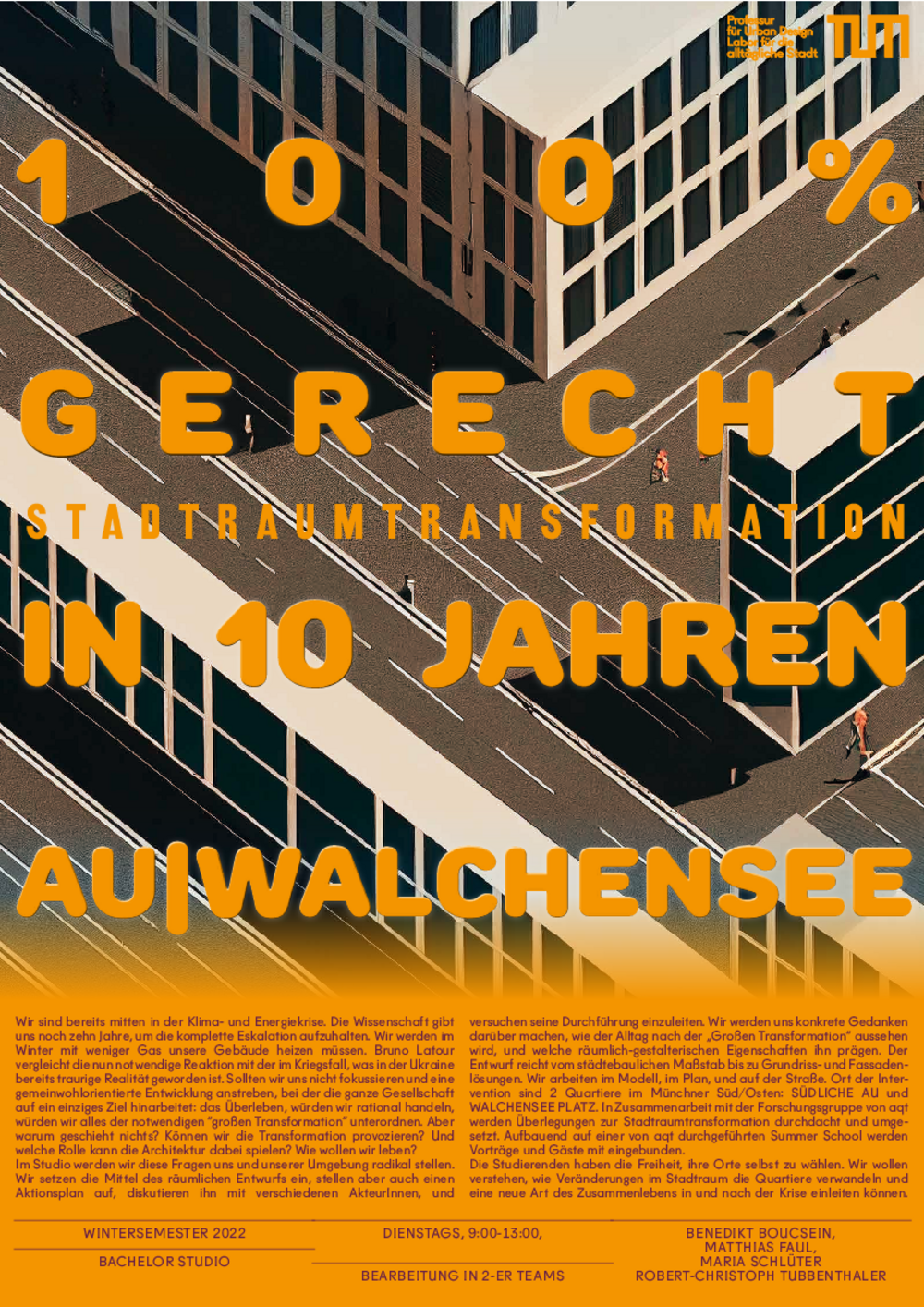Project BA - 100% Fair in 10 Jahren: Au / Walchensee
Wintersemester 2022
Team: Prof. Benedikt Boucsein, Matthias Faul, Maria Schlüter, Robert-Christoph Tubbenthaler
We are already in the middle of the climate and energy crisis. Science gives us another ten years to stop the complete escalation. We will have to use less gas to heat our buildings in winter. Bruno Latour compares the response needed now to that in the event of war, which has already become a sad reality in Ukraine. Should we not focus and strive for a common good-oriented development, where the whole society works towards a single goal: survival, we would act rationally, we would subordinate everything to the necessary "great transformation". But why is nothing happening? Can we provoke the transformation? And what role can architecture play in it? How do we want to live?
In the studio we will radically ask these questions of ourselves and our environment. We will use the means of spatial design, but also set up an action plan, discuss it with different actors, and try to initiate its implementation. We will think concretely about what everyday life will look like after the "Great Transformation", and what spatial-design characteristics will shape it. The design will range from urban scale to floor plan and facade solutions. We work in the model, in the plan, and on the street.
Place of the intervention are 2 quarters in the south/east of Munich: SÜDLICHE AU and WALCHENSEE PLATZ. In collaboration with the research group of aqt, considerations for urban space transformation are thought through and implemented. Based on a summer school conducted by aqt, lectures and guests will be included.
Neighborhoods will be mapped and studied through area mapping. Based on this, a ten-year plan and action plans will be developed, which will frame and target the interventions. On the one hand, we will look at the transformation in the area, how types of use as well as land consumption can be mapped and changed. On the other hand, we will look at the social component of urban space. In an exchange with the City of Munich, we will look at how we can design the future space in a gender-responsive way. A booklet on a gender-equitable situation in urban space is to be created.
The students have the freedom to choose their own locations. We want to understand how changes in urban space can transform neighborhoods and usher in a new way of living together in and after the crisis. What happens in the car-reduced urban spaces of the future? How can we appropriate them? Will we build on them in a second row? How can we find new concepts of use for these in-between spaces? Why is there a car here?
